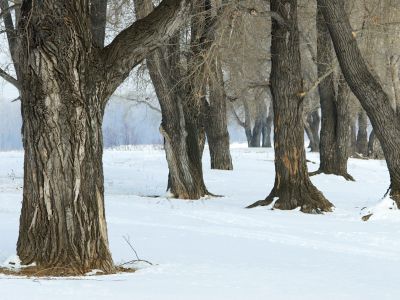If you live in a climate where the temperatures fall drastically in winter, you’ll want more information on how this can affect your trees. We’ll also give you tips on how to prevent exploding trees.
Frost Cracks in Trees
When the temperatures drop well below zero, you may prefer to stay indoors, but landscape trees do not have that option. Truly cold temperatures can cause thin-skinned tree trunks to crack vertically. These longitudinal openings are termed frost cracks, and they can extend deep into the inner wood of and permanently injure trees. Common victims of frost cracks include sycamores, maples, willows, horse chestnuts, apple trees, and cherry trees.
What Causes Frost Cracks?
The frost cracks are not caused exclusively by the cold weather. Rather, they appear after a quick temperature drop. Usually, the trees with frost cracks are those growing out where the sun shines on their bark of a winter afternoon. The warm sun heats up both the bark and the inner wood on the exposed side. But the sun doesn’t stay up forever, and as it dips below the horizon or passes into clouds, the air temperature plummets. This rapid temperature change shrinks the bark quickly, but the inner wood is a different story. It shrinks much more slowly, and it is this unequal contraction between the two that cause the bark and the wood beneath it to split.
Can Trees Explode from Freezing?
The sudden cracking of the tree trunk and wood causes a loud noise like an explosion. This is the sound of trees popping in extreme cold. Some scientists believe that the frost cracks in trees result from water moving out of cells and freezing during sudden drops in temperature. In this scenario, the surface wood shrinks as water in it freezes quickly, but the inner wood is not affected. This disparity causes pressure between the zones that cracks the trunk, causing a loud report.
Prevention Easier Than Cure
Once freeze cracks open up in a tree’s bark, it is difficult to help the tree. The cracks may close over in summer, but they don’t close entirely. This means that there is still an opening for insects and disease to enter. However, excellent cultural care that keeps the tree healthy can help it live longer. This includes extra water in times of drought and fertilizer when needed. Excellent cultural care can also help prevent tree trunk cracking. Many frost cracks appear in wounds or areas that were weakened by branch death or root death. Be sure that your weed trimmer and lawn mower don’t damage the trunk of any landscape tree. All branch trimming should be done with proper equipment and proper pruning cuts. Another place to focus is on preventing the south and southwest sides of deciduous tree trunks from the sun’s warmth on cold winter days. You can do this by planting evergreens on a side that will keep the deciduous tree’s trunk in shade. Another option is to wrap the vulnerable tree’s trunk with trunk guards that reflect sunlight. These should be removed as soon as frost danger is passed.
